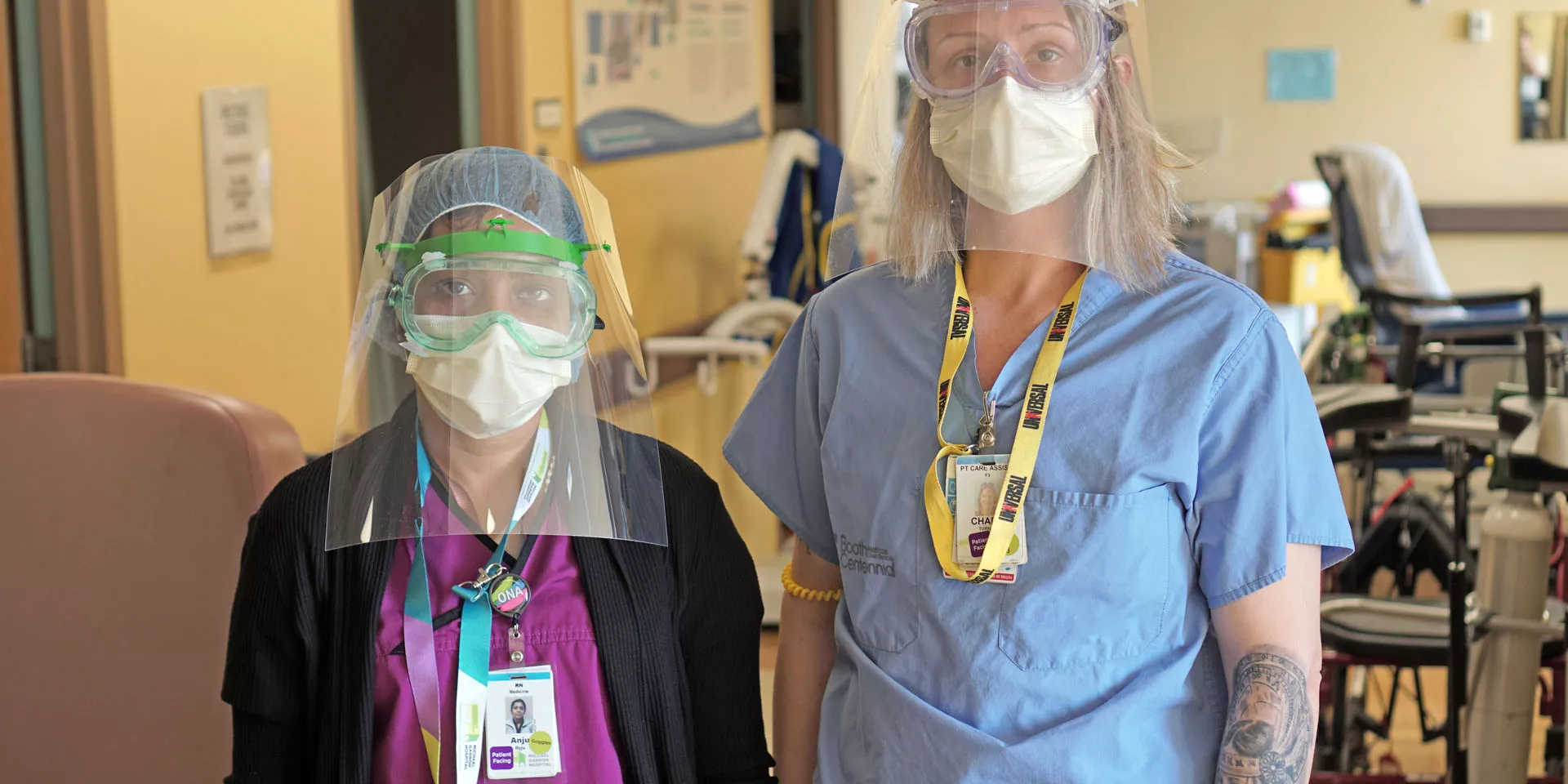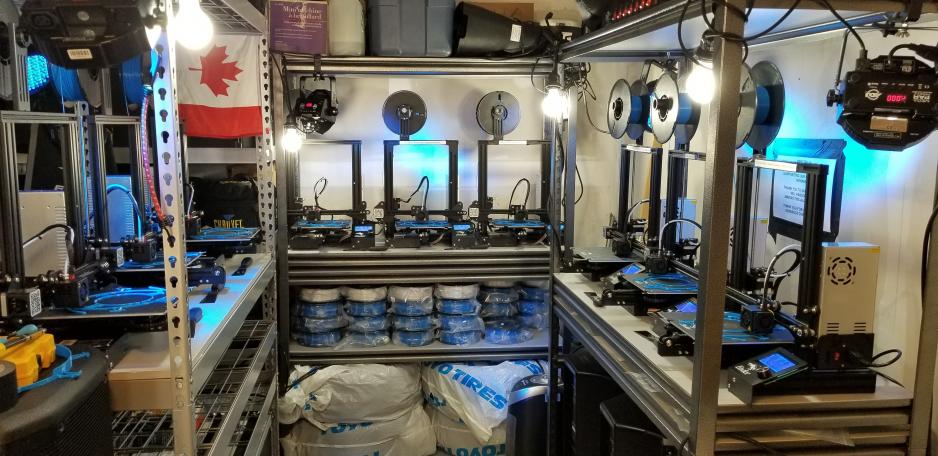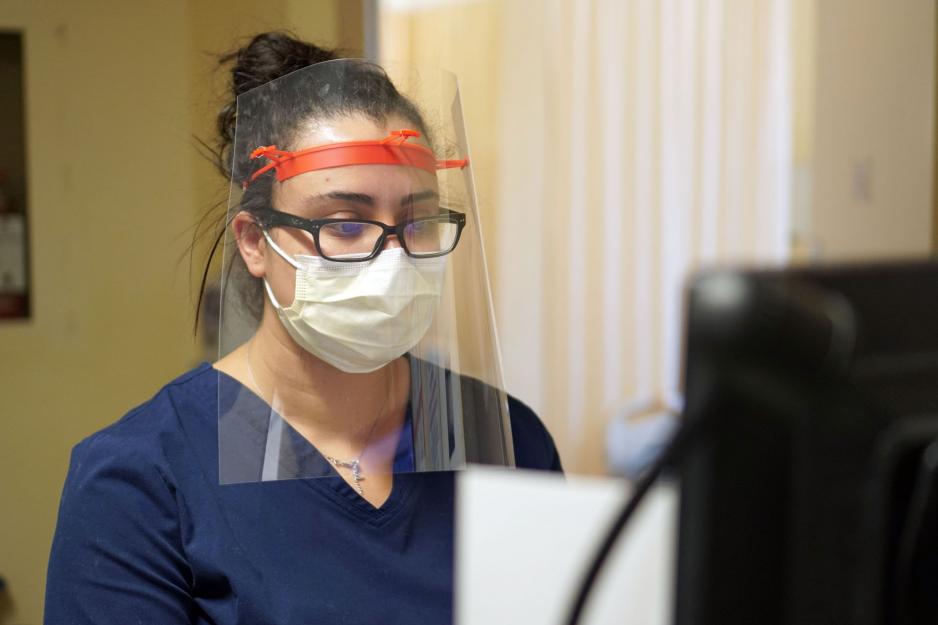Armed with 3D printers, innovators and robotics enthusiasts like Shawn Lim, founder of Bot Camp, which provides robotics programs for kids age 10 and up, are stepping up to meet the need for PPE at Michael Garron Hospital (MGH).
Sometimes the best ideas come when you least expect it
For Shawn, the call to design medical visors came out of the blue.
“My older sister is a now a physician in Boston, but attended medical school in Toronto and has a lot of friends here in the medical community,” says Shawn. “She was speaking with Dr. Marcus Kargel, a respirology physician at MGH, and learned the hospital was running low on medical safety visors; they were looking at crowdsourcing to generate a 3D printed solution.”
“My sister told him, ‘if you need a visor prototype, email my brother Shawn because he’s really good at solving challenging engineering problems.”
So Dr. Kargel reached out to Shawn with one question: “Is this possible?”
Shawn spent a few hours researching existing designs, sent Dr. Kargel a few ideas and said simply, ‘maybe.’
“In our first phone call, Dr. Kargel asked me the really hard questions like ‘how do we create these? Where do we get the parts? How do we disinfect them? How many times can we use them?’ and most importantly, ‘How many can we get?’”
Shawn quickly discovered that using the existing designs that were available, the answers to these questions weren’t very good.
“I ended the call feeling pretty discouraged about the possibilities,” admits Shawn. “but I told him to give me some time to see what I could come up with.”
Shawn stayed up all night and started from scratch, designing a visor using plastic, foam, elastics and clear plastic page covers. After seeing a photo of the design, Dr. Kargel requested a prototype, and gave it to Dr. Jeff Powis, Infectious Diseases Specialist and Medical Director at MGH, who wore it for three hours that day.
Hospital feedback leads to improvements
“The feedback from the hospital was that the design was great, but a little uncomfortable,” says Shawn. "So I went back to the drawing board, and made some adjustments and modifications."
Shawn widened the headband and made the design sturdier using acetate sheets that could be disinfected.
“It turns out that this tiny little design seems to have met most of the requirements the hospital is looking for,” says Shawn. “And they’re very fast to print – you can make 10 of these visors in the time it takes to make one of the other designs out there.”
A call to the community
Then came the true test: how to create these visors in large volumes.
“Michael Garron Hospital asked for a pilot run of 10,000 visors to test out usability, collect feedback and improve design, and determine what the required numbers really are,” says Shawn. “So I reached out to my peers and to the community to find people who could help with the printing.”
Ryan Dorland was one of those people.
“I’d been speaking to my cousin who is a frontline nurse, and she’d gotten quite emotional about the COVID-19 situation,” says Ryan, “so my wife and I thought, ‘what can we do to help?’ I got the link about this 3D initiative, and though I knew nothing about 3D printing a week ago (I’m a video producer), I quickly realized how easy it really is.”
He also realized he’d need some help.
“I put together a GoFund me account, and within 12 hours had enough money to buy three machines. Within 72 hours I had enough to buy five printers, and now I currently have nine online,” he says. “The crowd-funding response has been incredible. We've now raised over $11,500, and we have enough plastic to make over 7,000 headbands with the ability to produce about 1,000 a week."
He’s set up a live feed to the printing process he’s set up in the garage of his Milton home, and on the printers he’s taped the names of family and friends who are on the frontlines.
“My cousin is the one whose stories from the frontlines inspired me to do this,” Ryan says. “These names are up there as a daily reminder of why and who I’m doing this for.”
After the COVID-19 pandemic is over, Ryan is hoping to find new homes for his printers.
“I’d love to donate these to schools or other places where students can learn to do things exactly like what we’re doing right now,” he says.
Pilot trial underway
Hospital staff on H7 are currently trialing visors as they are delivered, thanks in part to the help of Jaguar Land Rover Canada. The company has made Land Rover off-road vehicles and drivers available to hospitals in Canada to assist in the collection of Personal Protective Equipment (PPE), amid the coronavirus outbreak.
“While this isn’t really an established design, it’s the best way to adapt the same type of geometry and facial coverage as some of the commercial shields used,” says Matthew Brown, Safety Promotion and Prevention Specialist at MGH.
"Our goal is that we'll be able to disinfect and reuse these visors, but we're in the testing stages now with our medical staff to see if that's possible. Ultimately, we're hoping to tap into industrial printers to produce these on a larger scale if this design is successful."
Staff at MGH are immensely grateful to the community for answering the hospital's call for support, particularly Dr. Michael Warner's request for PPE assistance.
"The community response to Dr. Warner's plea for assistance has been overwhelming," says Wayne Lee, manager of Infection Control and Prevention. "This is a community, more importantly a global community. We will get through this 'together'."


